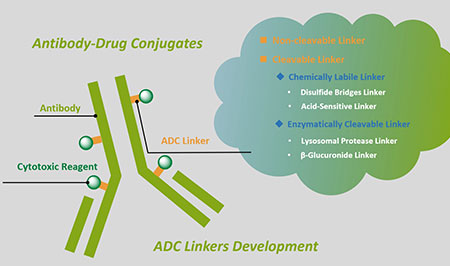1. Effects of Coformer and Polymer on Particle Surface Solution-Mediated Phase Transformation of Cocrystals in Aqueous Media
Daisuke Inoue, Tomohiro Watanabe, Maaya Omori, Jumpei Oki, Taiga Uekusa, Kiyohiko Sugano Mol Pharm . 2020 Oct 5;17(10):3825-3836. doi: 10.1021/acs.molpharmaceut.0c00587.
The purpose of the present study was to investigate the effect of the coformer difference on particle surface solution-mediated phase transformation (PS-SMPT) during cocrystal particle dissolution in aqueous media in the absence and presence of polymers. SMPT can occur either in the bulk phase or at the particle surface because drug molecules can be supersaturated at the dissolving cocrystal surface, as well as in the bulk phase. Previously, bulk phase SMPT has been primarily investigated in formulation development. However, little is known about the effects of coformers and polymers on PS-SMPT of cocrystals. In this study, six carbamazepine (CBZ) cocrystals were used as model cocrystals (malonic acid (MAL), succinic acid (SUC), glutaric acid (GLA), adipic acid (ADP), saccharin (SAC), and nicotinamide (NCT); nonsink dissolution tests were performed with or without a precipitation inhibitor (hydroxypropyl methylcellulose (HPMC)) at pH 6.5. The residual particles were analyzed by powder X-ray diffraction, differential scanning calorimetry, polarized light microscopy (PLM), and scanning electron microscopy. Real-time PLM was used to directly observe rapid PS-SMPT. In the absence of HPMC, supersaturation was not observed in the bulk phase for all cocrystals. All cocrystals rapidly transformed to CBZ dihydrate aggregates via PS-SMPT (mostly within 1 min). In contrast, in the presence of 0.1% HPMC, supersaturation was observed for CBZ-SUC, CBZ-ADP, CBZ-SAC, and CBZ-NCT but not for CBZ-MAL and CBZ-GLA. The cocrystals with lower solubility coformers tended to induce higher supersaturation in the bulk phase. The PS-SMPT of CBZ-SUC, CBZ-ADP, and CBZ-SAC was slowed down by HPMC. By suppressing PS-SMPT, the cocrystals exhibited its supersaturation potential, depending on the properties of each coformer. To take advantage of the supersaturation potential of cocrystals to improve oral drug absorption, it is important to suppress particle surface SMPT in addition to bulk phase SMPT.
2. First-In-Human Phase 1 Study of a Nonwoven Fabric Bioabsorbable Spacer for Particle Therapy: Space-Making Particle Therapy (SMPT)
Tomohiro Yamashita, Daisuke Miyawaki, Kenji Yoshida, Tianyuan Wang, Ryohei Sasaki, Shohei Komatsu, Hiroaki Akasaka, Yusuke Demizu, Takumi Fukumoto, Tomoaki Okimoto Adv Radiat Oncol . 2019 May 15;4(4):729-737. doi: 10.1016/j.adro.2019.05.002.
Purpose:Surgical spacer placement (SSP) is useful in particle therapy (PT) for patients with abdominal or pelvic tumors located adjacent to normal organs. We developed a nonwoven fabric bioabsorbable spacer made of polyglycolic acid (PGA) sutures that degrades via hydrolysis. We then conducted this first-in-human phase 1 study of the combination of SSP and PT using the PGA spacer, which we termed space-making PT (SMPT). This study aimed to evaluate the safety and efficacy of SMPT in patients with unresectable malignant tumor located adjacent to normal organs.Methods and materials:The eligibility criteria included histologically proven malignant abdominal or pelvic tumor adjacent to the intestines, no metastasis, and no previous radiation therapy. Periodic computed tomography (CT) images were obtained before SSP and before, during, and after PT until the spacer disappeared. Treatment planning was performed for each CT image set until the end of PT, and doses for the planning target volume and organs at risk were analyzed. The thickness and volume of the PGA spacer were measured in each CT image set. Adverse events were evaluated according to the Common Terminology Criteria for Adverse Events version 4.0.Results:Five patients were enrolled in this study. All patients received 70.4 Gy (relative biological effectiveness) of irradiation. V95%of the planning target volume before SSP, at the beginning of PT, and at the end of PT was 82.1% ± 11.3%, 98.1% ± 1.1%, and 97.1% ± 0.8%, respectively. The PGA spacers maintained enough thickness (≥1 cm) until the end of PT and disappeared within 8 months after SSP in all patients. No grade ≥3 acute adverse events were observed.Conclusions:The SMPT is feasible and useful for abdominal or pelvic tumors adjacent to the intestines. This method may be applicable to unresectable tumors located adjacent to normal organs and may expand the indications of PT.
3. Biorelevant Media Slows the Solution-Mediated Phase Transformation of Amorphous Spironolactone
Robin H Bogner, Mary S Kleppe, Roy J Haskell J Pharm Sci . 2018 Jan;107(1):426-435. doi: 10.1016/j.xphs.2017.10.041.
Solution-mediated phase transformation (SMPT) can reduce the high drug concentration expected from amorphous formulations, eliminating the improvement in drug absorption one hoped to gain from this high energy drug state. The differences in SMPT of a supersaturating system were compared in biorelevant media (fasted state simulated intestinal fluid and fed state simulated intestinal fluid) and United States Pharmacopeia compendial medium, simulated intestinal fluid without pancreatin. Amorphous spironolactone underwent SMPT to the same hydrate of spironolactone in all 3 media which was confirmed by the decrease in dissolution rates assessed in a flow-through dissolution apparatus, as well as by the appearance of crystals on the amorphous solid surface detected by polarized light microscopy. Longer duration of supersaturation which may lead to greater in vivo oral drug absorption was found in both biorelevant media, compared to compendial (average > 90 vs. 20 min), indicating that the presence of surfactants in biorelevant media delays crystal growth. Surface profiles and polarized light micrographs suggest that (1) a significant increase in surface area due to 3D crystal formation, (2) amorphous areas remaining exposed on the surface, and (3) a lower nucleation rate are potential reasons for an elevated dissolution rate even after SMPT.







